Subsea Mining: All Eyes on Marine Minerals Offshore Norway

Marine minerals are coming under sharp focus offshore Norway. Analysts suggest it could be a $20 billion annual revenue industry by 2050, which is why many are taking an interest and developing the technology to make it happen. Marine mineral mining has been something of a slow burner in the wider marine world. It has some clear challenges, not least location and depth of these potential resources, but also concerns around its environmental impact.Yet it now appears to be coming into a distinctly sharp focus…
New Study Finds Polyester Fibers Throughout the Arctic Ocean
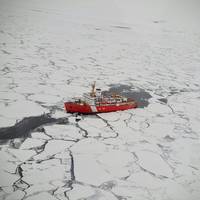
The Arctic has long proven to be a barometer of the health of our planet. This remote part of the world faces unprecedented environmental assaults, as climate change and industrial chemicals threaten a way of life for Inuit and other Indigenous and northern communities that rely heavily on seafood and marine mammals for food.But who would have imagined that the clothes we wear might add to this onslaught? Evidence increasingly shows that tiny synthetic fibers are permeating the Arctic Ocean and finding their way into zooplankton…
SCIENCE: Seafloor Microplastic Hotspots Controlled by Deep-sea Currents

New research has revealed the highest levels of microplastic yet recorded on the seafloor, with up to 1.9 million pieces in an area of just one square metre.Published this week in the journal Science, this study shows how deep-sea currents act as conveyor belts, transporting tiny plastic fragments and fibers across the seafloor. These currents can concentrate microplastics within huge sediment accumulations, which the authors of the research term ‘microplastic hotspots’. These…
Environmental DNA Emerging in the Ocean Science Community
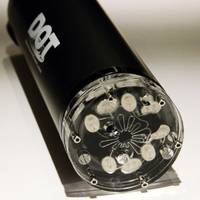
There is a new buzzword in the ocean science/sensing community. The word is eDNA, an abbreviation for environmental DNA. This refers to DNA that can be extracted from environmental samples without first isolating any target organisms. In the maritime community such samples are taken from water. All living organisms leave traces of DNA in their environments which is an indicator of their presence over time. This DNA is released into the environment through the biological process of living animals or by the decomposition of dead organisms.
Oi: Tracking 50 Years of Ocean Innovation
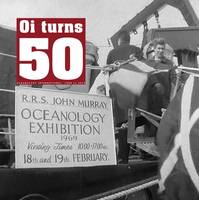
As Oceanology International celebrates its 50th Anniversary, Marine Technology Reporter explores half a century of subsea technology development and discovery. Oceanology International Americas runs February 25-27, 2019 in San Diego.When Oceanology launched in 1969 in the seaside resort of Brighton the world was a very different place. For a start, Brighton was home to the mods and rockers, who would square off against each other on the town’s elegant seafront. The British currency included shillings and ha’ pennies and man had yet to step foot on the moon.More crucially…
USCG Implements Handheld Technology for Onboard Oil Testing

With a motto of Always Ready, the United States Coast Guard (USCG) has 11 missions specified by law including drug and migrant interdiction; ports, waterways and coastal security; fishery patrols; search and rescue; and national defense. The USCG’s newest ships including 22 Fast Response Cutters (FRCs) recently entered service with 36 more on order and six new National Security Cutters (NSCs) with two more in the process of being built. Oil analysis plays a critical role in the…
Parker Kittiwake Launches ATR Analyzer
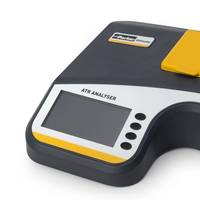
Parker Kittiwake launched the Parker Kittiwake Attenuated Total Reflection (ATR) analyzer, which the company says represents a breakthrough for the simultaneous testing of base number (BN), total acid number (TAN), insolubles, soot loading, viscosity, FAME and water content of oil samples on board a ship, allowing all parameters to be measured using a single sample in one test kit. The ATR analyzer uses infrared spectroscopy to determine the presence of damaging elements such as solid particles or water in a representative sample of oil.
ClassNK Launches Bunker Fuel Oil Analysis Service
ClassNK’s subsidiary ClassNK Consulting Service (NKCS) has officially launched its Bunker Fuel Oil Analysis Service. The service will provide an oil analysis report for the properties of bunker fuel oil based on the ISO8217 Standard with advice such as oil heating and purification. Testing laboratories are located worldwide in Singapore, UAE, U.K. and U.S. After sampled oil is received at the nearest laboratory from each ship, an analysis report will be provided by email and online within 48 hours. In addition to analysis based on the ISO8217 Standard, the Bunker Fuel Oil Analysis Service also provides special analysis services based on request…
ABB Acquires Los Gatos Research
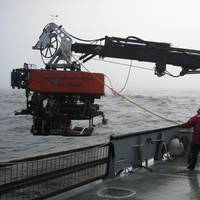
ABB to acquire Los Gatos Research (LGR) adding a new line of high-performance gas analyzers to its measurement business. Los Gatos Research (LGR) of Mountain View, California, is a 19-year-old, nearly 40-person company that provides analyzers and services to a wide range of customers needing real-time measurement of trace gases and isotopes for research and environmental monitoring. LGR's novel and innovative laser-based measurement strategies allow for non-destructive analysis of gases and liquids.
Dean James Wins Best Poster Prize at Ocean Business
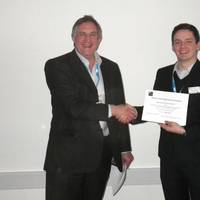
Chelsea's Technical Director, Dr. John Attridge, presented the prize for best poster to Dean James (University of Oxford) at the Microfluidics and Microsensor Sensor Technology for Oceanographic and Environmental Science Applications Workshop held during Ocean Business at NOC Southampton. The Challenger Society hosted this fascinated one-day workshop which focused on developments in microfluidics and microsensor technology for oceanographic and environmental science applications.
Penn State Receives Grant
The Pennsylvania State University Electro-Optics Center, Freeport, Pa., is being awarded an $11,488,791 cost-plus-fixed fee contract for research, design, development, and delivery of sub-systems for use in the next generation radars and the Common Data Sensor Architecture (CDSA) Program. The CDSA is a centralized system for collecting input information from a variety of sensors and even providing information from one group of sensors to another. Two technologies are fundamental for the CDSA to successfully transition to producible, fielded systems: high voltage/ high power switching devices based on halide chemical vapor deposition; and wavelength division multiplexing.
Propulsion: Optimizing Feed Rates For Crosshead Diesels
ExxonMobil introduced a program to optimize cylinder oil feed rates in low-speed (crosshead) diesel engines. The "Feed Rate Optimization" program is designed to help minimize operating expenses by analyzing scrapedown oil as a way to detect changes in the condition of an engine¹s cylinders. The program, which is designed to help customers find a balance between the cost of cylinder oil and the expense of wear-related cylinder maintenance, analyzes scrapedown oil collected from the engine’s scavenge space, a technique pioneered by ExxonMobil. It is designed to provide comprehensive laboratory testing and analysis of the oil sample, and offers onboard testing tools that enable ship’s engineers to quickly detect substantive changes in cylinder condition.







